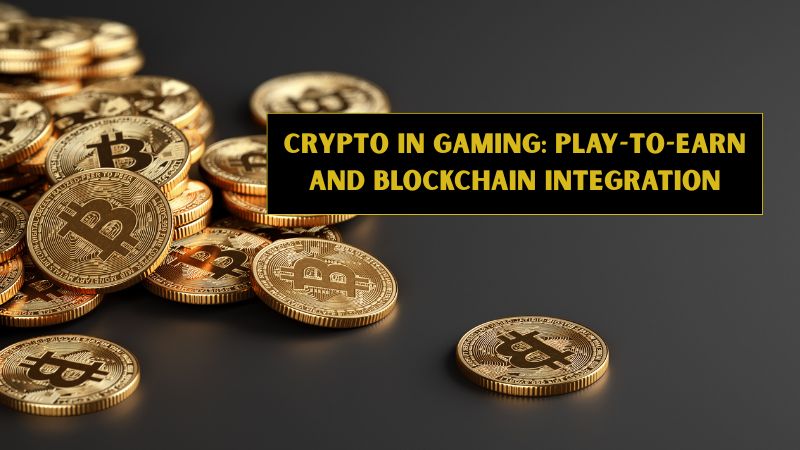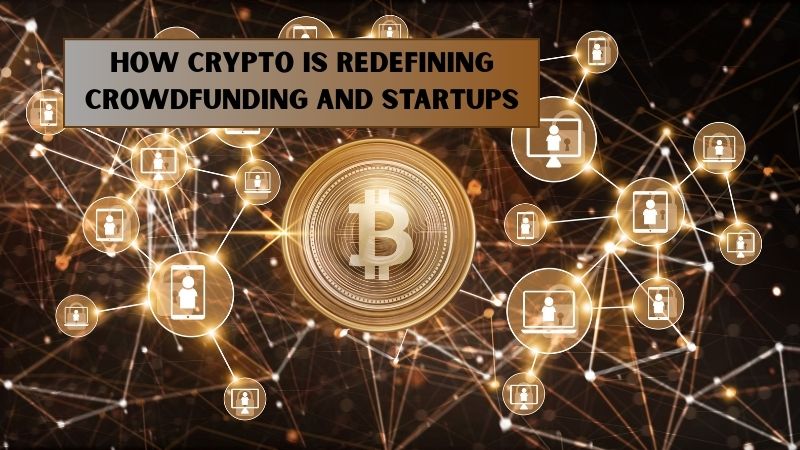The world of gaming has always been on the cutting edge of technology. From improved graphics to virtual reality, each leap forward has transformed how we play. Now, the rise of cryptocurrency and blockchain is shaking things up once again. Crypto in gaming is creating exciting new ways to play, earn, and even own parts of the game. Whether you’re a casual player or a die-hard fan, understanding how these technologies are changing the landscape is essential. Let’s dive into how play-to-earn models and blockchain integration are shaping the future of gaming.
What Is Play-to-Earn Gaming?
Play-to-earn, or P2E, is a gaming model where players can earn real-world value through in-game activities. Instead of just playing for fun, gamers can now earn cryptocurrencies, NFTs (non-fungible tokens), or other digital assets. These rewards can be traded, sold, or used in other games or platforms.
Unlike traditional games, where your time and achievements stay locked within the game, P2E gives players real ownership. Games like Axie Infinity and The Sandbox are leading the way, offering gamers a chance to make money while having fun. It’s turning gaming into a side hustle or even a full-time job for some.
How Blockchain Is Used in Gaming
Blockchain is the technology behind cryptocurrencies like Bitcoin and Ethereum. In gaming, blockchain provides a secure and transparent way to track ownership, manage transactions, and prevent cheating or fraud.
Through blockchain, in-game assets like weapons, skins, or even virtual land can be owned as digital tokens. These assets are recorded on the blockchain, making them tradable and verifiable. Blockchain also allows for smart contracts—self-executing contracts that can automate rewards or actions within games.
This means players can truly own what they earn and take their digital items from one game to another, building an open gaming ecosystem.
Benefits of Play-to-Earn for Gamers
Play-to-earn offers gamers several exciting benefits. First, it creates an opportunity to earn income by doing what they love. In some countries, P2E games have become a source of financial support for families.
Second, it adds a deeper sense of purpose to gaming. Achievements now carry real-world value, and time spent gaming feels more productive. It’s not just about leveling up or completing missions; it’s about gaining something tangible.
Lastly, players gain more control and ownership over their gaming assets. Unlike traditional games where developers can shut down servers or remove items, blockchain games put more power in the hands of the players.
The Rise of Gaming Cryptocurrencies
Many blockchain games operate on their own cryptocurrencies. These tokens are used for buying items, paying rewards, and powering game economies. Some popular gaming tokens include AXS (Axie Infinity), SAND (The Sandbox), and MANA (Decentraland).
These tokens are often listed on crypto exchanges, where they can be traded for other digital assets or traditional currency. This creates an economy around the game that can benefit both players and developers.
By using their own cryptocurrencies, games can create balanced and decentralized economies. Players are rewarded for their participation, and developers can attract more users through incentives.
NFTs in Gaming
NFTs are a big part of blockchain gaming. Each NFT is a unique digital item, like a character, weapon, or piece of virtual real estate. NFTs are stored on the blockchain, which proves ownership and authenticity.
In gaming, NFTs allow for truly unique in-game items that can be bought, sold, or traded. This makes the gaming experience more personal and valuable. For example, owning a rare sword or character skin can make a player stand out—and they can even sell it later for a profit.
NFTs also open the door for player-created content. Users can design and mint their own items, sell them on marketplaces, and even earn royalties whenever those items are resold.
How Blockchain Builds Trust in Gaming
One of the biggest challenges in gaming is fairness. Players often complain about rigged systems, cheating, or developers changing the rules. Blockchain offers a solution by adding transparency to the game’s mechanics.
All transactions, ownership records, and game rules are stored on the blockchain, where they can’t be changed or hidden. This creates a fair environment where players know exactly how things work.
This level of trust builds stronger communities and keeps players engaged for longer. Developers also benefit, as it reduces disputes and builds loyalty.
Challenges of Crypto Gaming
While the future of crypto in gaming is bright, it’s not without its challenges. First, the entry barrier can be high. Many games require players to purchase NFTs or tokens upfront, which can be expensive.
Second, the value of in-game tokens can be unstable. Market crashes can reduce a player’s earnings or investment. This makes the economy risky, especially for those who rely on it for income.
Security is another concern. While blockchain is secure, phishing scams and hacked wallets can still affect players. Proper education and better security tools are needed to protect users.
Future Trends in Blockchain Gaming
The future of crypto gaming is full of potential. Developers are working on cross-platform games where assets can be used across different titles. Imagine earning a sword in one game and using it in another—that’s the power of blockchain.
GameFi, a mix of gaming and decentralized finance, is another rising trend. It allows players to stake, lend, or farm tokens within games, earning passive income. This makes games more than just fun—they become investment opportunities.
Virtual reality and metaverse gaming worlds are also evolving with blockchain. These immersive spaces let users explore, play, trade, and socialize in a fully digital economy.
Popular Play-to-Earn Games to Watch
Some games are already making waves in the P2E space. Axie Infinity lets players battle creatures and earn AXS tokens. The Sandbox allows users to create and monetize virtual worlds. Decentraland offers virtual real estate that users can buy and sell as NFTs.
Other notable names include Gods Unchained, a card-based battle game, and Illuvium, a futuristic RPG built on Ethereum. These games are attracting large communities and gaining attention from both gamers and investors.
With new titles launching regularly, the space is growing fast. Each game offers its own twist on the play-to-earn model, making it an exciting time to get involved.
How to Get Started with Crypto Gaming
Getting started with crypto gaming is easier than it sounds. First, choose a game that interests you. Research its token, community, and gameplay.
Next, create a digital wallet like MetaMask to store your crypto and NFTs. You’ll need this to connect to blockchain games and manage your assets.
Then, purchase the necessary tokens or NFTs if required. Some games have free-to-play options, while others need upfront investment. Always start small and never spend more than you can afford to lose.
Finally, join the community. Most games have active Discord or Telegram groups where you can learn, share tips, and stay updated.
Conclusion: The New Era of Gaming
Crypto in gaming is more than just a trend—it’s the start of a new era. Play-to-earn models and blockchain integration are giving players more control, ownership, and opportunities than ever before.
While there are challenges, the potential is massive. From unique NFTs to real-world earnings, gamers now have the chance to turn their passion into profit. As technology evolves, the gap between gaming and finance will continue to shrink.
Whether you’re a gamer, investor, or simply curious, now is the perfect time to explore the world of crypto gaming. The future is being built, one block at a time.


